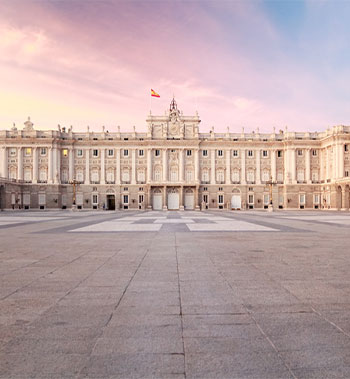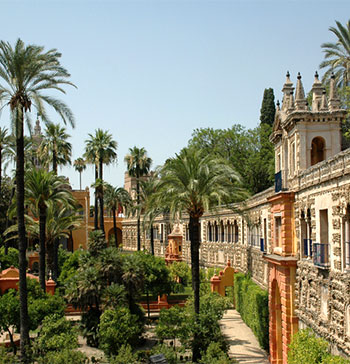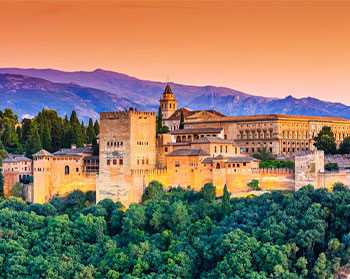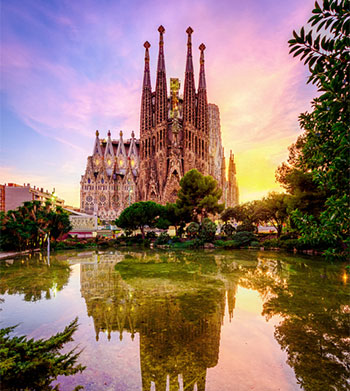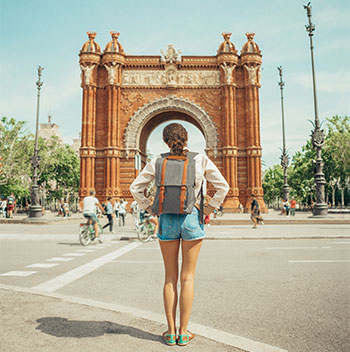Spain - home to some of the best food and wine, captivating architecture, stunning natural beauty and rich culture and history. As the largest country in Southern Europe, there is an abundance of things to see and do but if you only have a week, we’ve put together an itinerary to help you make the most of your trip.
Travel Itinerary: 7 Days in Spain
Days 1 & 2: Madrid
There’s no better place to kick off your trip than in the country’s vibrant capital.
Your first day can be spent exploring the city’s many museums, parks, and historical sites including the Royal Palace of Madrid (the official residence of the Spanish Royal Family), and the Prado Museum (one of the world’s most famous art museums). Strolling through Madrid’s lively neighbourhoods is the best way to come across unique experiences, and stumble upon delicious tapa and wine.
On your second day, we recommend heading to the nearby town of Toledo. The town, approximately half an hour away by train, is known for its stunning medieval architecture and deep history, with landmarks such as the Cathedral of Toledo and the Alcázar of Toledo.
Days 3 & 4: Seville
From Madrid, you can either fly or take a train south to the city of Seville, famous for its flamenco dancing, Moorish architecture, and mouth-watering cuisine.
The third day of your trip can be spent visiting Seville’s beautiful landmarks such as the Alcázar of Seville and the Seville Cathedral, the largest Gothic cathedral in the world. Following your afternoon siesta, you can enjoy some traditional Spanish cuisine and catch a live flamenco show.
Using Seville as your base, day four can be taken as a day trip to the nearby town of Córdoba to see the famous Mezquita mosque-cathedral and explore the town’s charming old quarter.
Day 5: Granada
On day five, we recommend heading east to Granada to soak up the rich history of Spain. The city’s Alhambra Palace and fortress complex is a UNESCO World Heritage site, renowned for its architectural beauty - a blend of Moorish and Andalusian culture. Some of the city’s other landmarks include the Granada Cathedral and the beautifully preserved neighbourhood of Albaicín.
If you do have longer than a week in Spain, we recommend spending a few more days in Granada to hike or ski the nearby Sierra Nevada mountains (depending on the season).
Days 6 & 7: Barcelona
To perfectly round out your trip, we recommend spending your final couple of days exploring the vibrant coastal city of Barcelona. The second-largest city in Spain has plenty to discover from awe-inspiring landmarks including La Sagrada Familia, Park Güell, and La Rambla. Additionally, the city’s Gothic Quarter is home to several beautiful buildings and museums.
Barcelona is also famous for its delicious seafood and wine, which you can enjoy in one of the city’s many restaurants overlooking the Mediterranean Sea.
Spend your final day in Spain unwinding at one of Barcelona’s popular beaches, or even take a day trip to the nearby coastal region of Costa Brava. You also can’t leave without catching a La Liga game, to see some of the world’s best footballers in action.
Quick Tips Before You Travel to Spain
- Book transport and buy tickets to museums, tours, and shows in advance
- The level of English in Spain can be quite basic unless you’re visiting the touristy areas, so we recommend learning some basic Spanish phrases to get by
- To drive in Spain, you will need an International Driving Permit and a valid Australian Driver’s Licence
- Australian Citizens can stay in Spain for up to 90 days in any six-month period without a visa
- ATMs are available across Spain, but if you want to purchase from a street vendor or local tapas bar, it’s a good idea to carry cash
- Tipping is not mandatory in Spain but the locals do practice it and it is always appreciated
